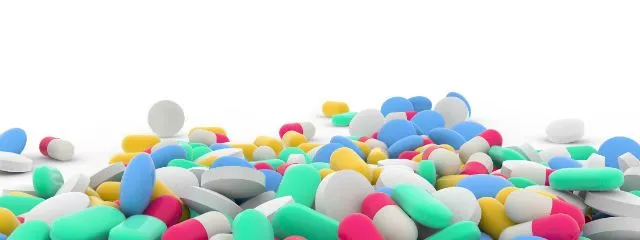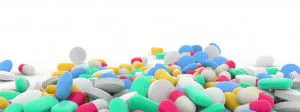
- Share on Facebook92
- Share on Pinterest
- Share on Twitter
We’re not talking about street drugs… we’re talking about the medications prescribed to large numbers of kids and adolescents for a variety of behavioral issues.
Many of these drugs have dangerous side effects, and all-too-often physicians prescribe them as their first response to an issue, not as a last resort.
According to data compiled by the CDC between 2011 and 2012, seven and a half percent of kids between the ages of six and 17 took prescription medication for “emotional or behavioral difficulties” in the previous six months. The CDC defines “emotional or behavioral difficulties” as “difficulties with emotions, concentration, behavior, or being able to get along with others.”
The two most common types of drugs prescribed to kids are antidepressants and attention deficit hyperactive disorder (ADHD) drugs. Many antidepressants, including the popular drug Prozac, list right on the label that an increased risk of violent behavior and of suicide are possible side effects of taking the drug.
The fact that these dangerous medications are so commonly given to young people with developing bodies and minds is appalling, especially when they are prescribed before other natural avenues are explored.
Medications are commonly prescribed to kids who don’t get along with others, cannot pay attention in school, and even sometimes to those that wet the bed. Instead of asking ourselves what conditions in a child’s life may be causing them to act in these ways, far too many people simply give them a pill hoping the problem will go away. In many cases, it gets much worse, or new problems arise.
One reason that many kids today are exhibiting behavioral issues could very well be the foods that they are eating. Sugar, for one primary example, can lead to hyperactivity and subsequent crashes, and it’s in almost every processed food item out there. Artificial colorings are another example, as they have specifically been linked to behavioral problems in children.
It is also important to note that in some cases, medications are prescribed to combat relatively normal adolescent behaviors. Previous generations knew that kids sometimes daydream – if a class isn’t interesting they likely won’t pay attention – and that teenagers naturally “act out” due to raging hormones. These things weren’t considered medical problems, they were simply facts of life.
 Of course, some cases are much more severe than others. However, instead of running to the doctor for a prescription as a first response, cutting sugar and processed foods out of a child’s diet, and spending quality time with them – perhaps even exercising together to get their extra energy out – should be methods to try first. Giving them a drug simply sweeps the problem under the rug.
Of course, some cases are much more severe than others. However, instead of running to the doctor for a prescription as a first response, cutting sugar and processed foods out of a child’s diet, and spending quality time with them – perhaps even exercising together to get their extra energy out – should be methods to try first. Giving them a drug simply sweeps the problem under the rug.
If that doesn’t work, seeking a good counselor and looking into cognitive behavioral therapy can be a highly effective option for some, and it sure beats drugging up children until they are walking zombies, or worse.
-The Alternative Daily
Sources:
http://www.undergroundhealth.com/psych-meds-nations-youth
http://www.cdc.gov/nchs/data/databriefs/db148.htm
https://www.thealternativedaily.com/top-5-worst-artificial-colors
- Share on Facebook92
- Share on Pinterest
- Share on Twitter

